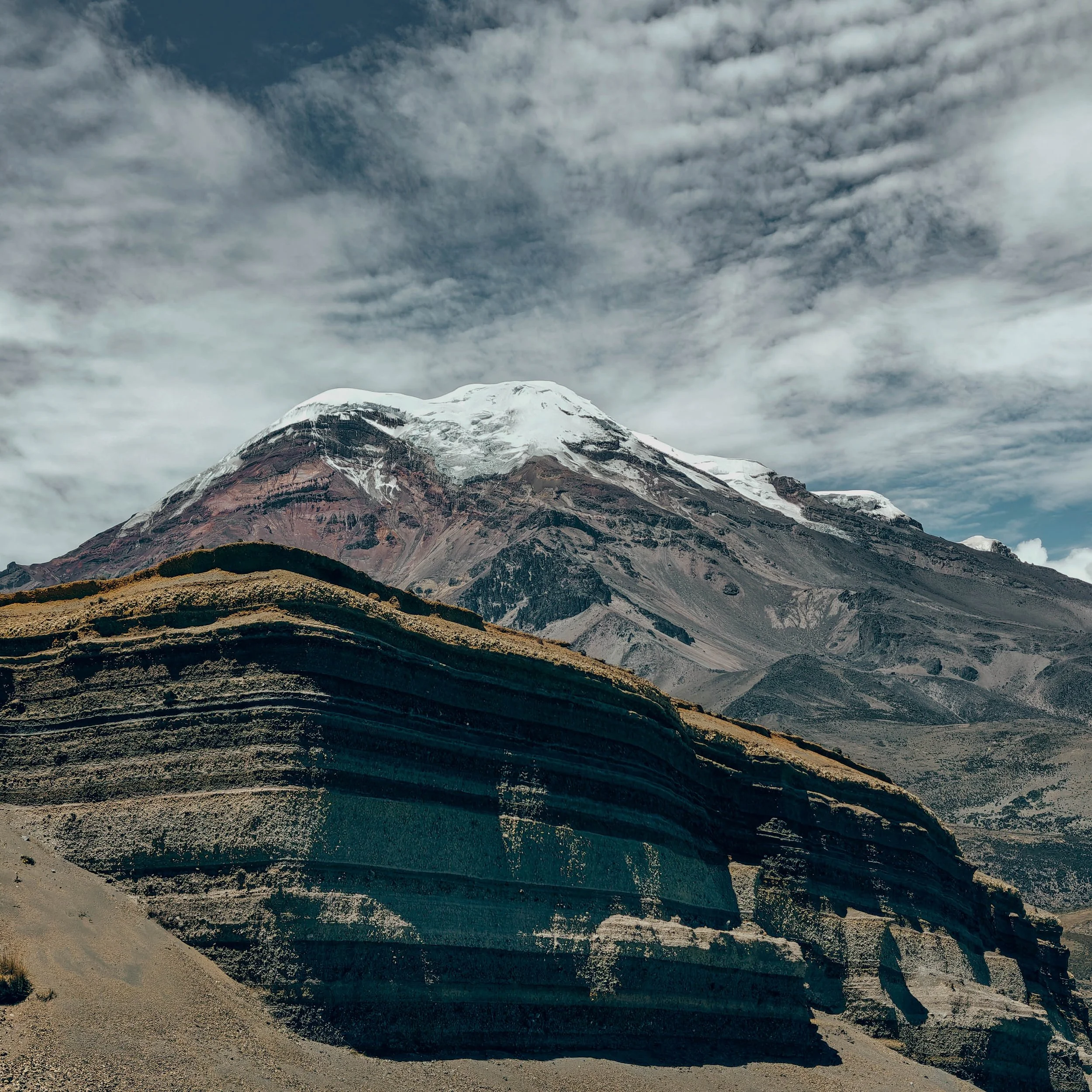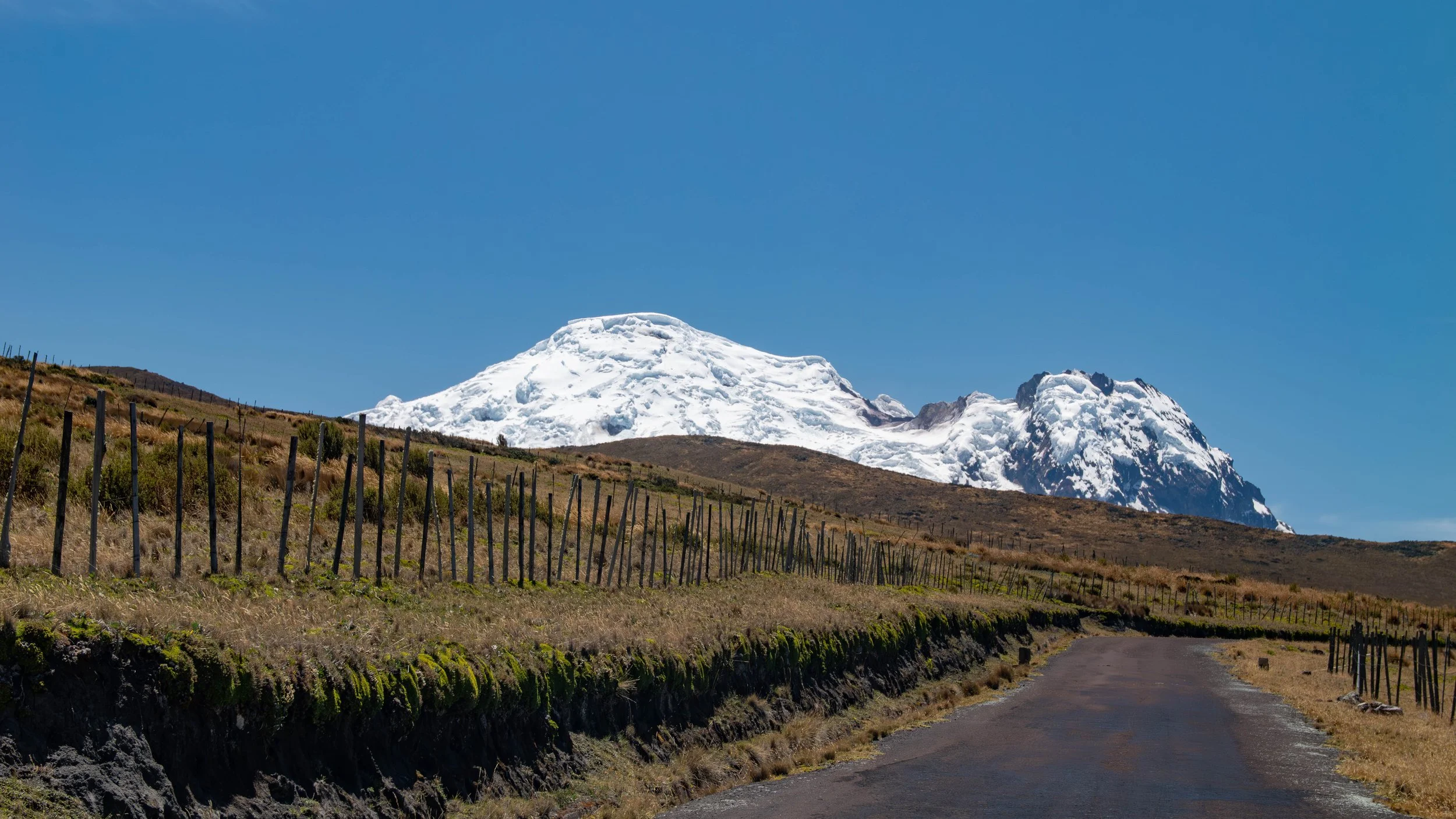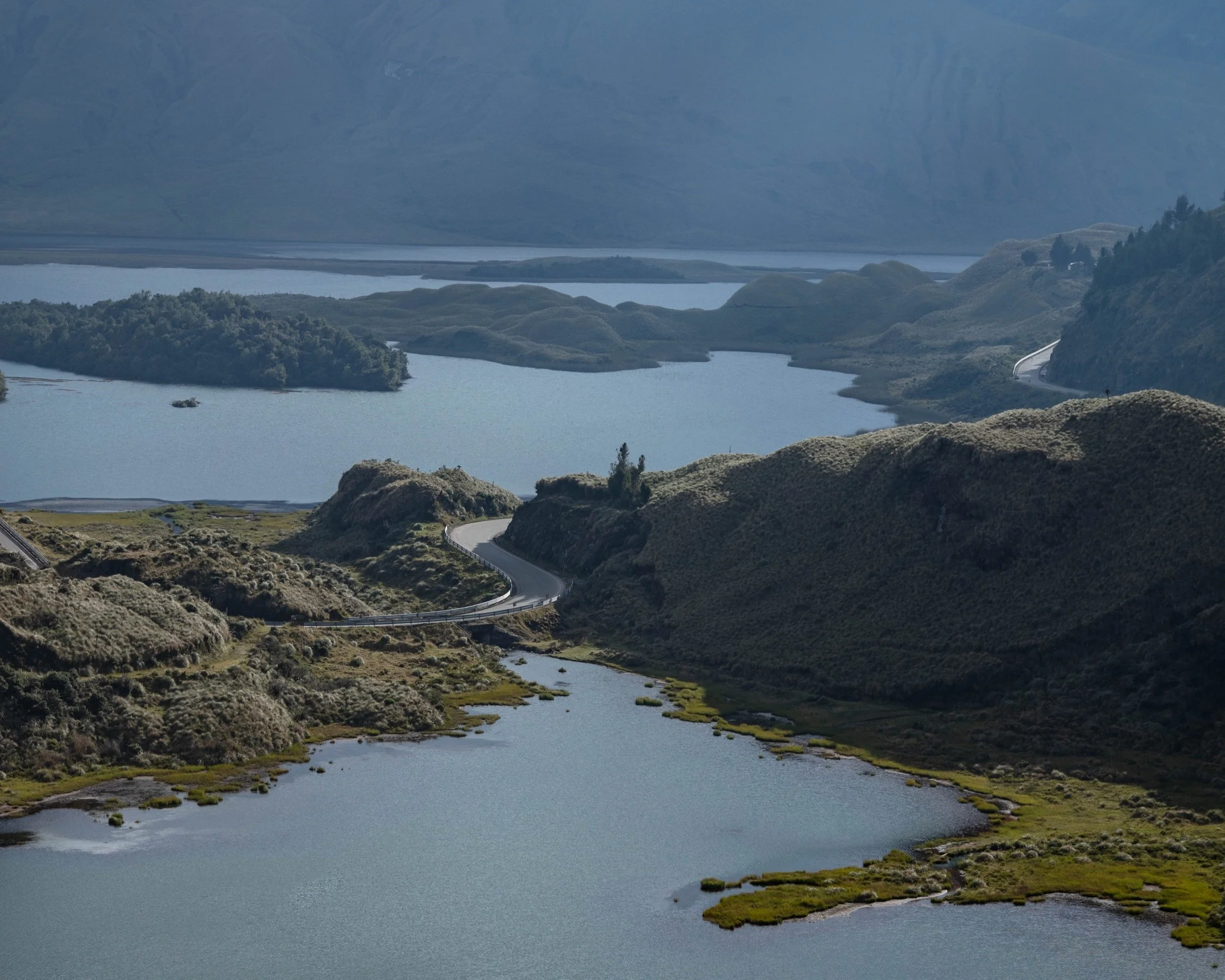
Our Central Highlands tour takes you through three of Ecuador’s most iconic national parks: Chimborazo, Sangay, and Antisana. These are not just protected areas—they are living sanctuaries of megadiversity, and sacred lands deeply revered by native cultures for centuries.
Chimborazo National Park
Home to the closest point on Earth to the sun, Chimborazo is more than just Ecuador’s tallest mountain—it’s a sacred presence that defines the skyline of the central Andes. This towering, snow-capped volcano rises above sweeping páramo grasslands, where the air is thin, crisp, and filled with silence.
Within the park, herds of wild vicuñas roam freely, their graceful movements contrasting the stark, dramatic landscape. The ecosystem here is both fragile and resilient, home to rare high-altitude flora and birds like the Andean condor. For local communities and Indigenous cultures, Chimborazo it's a spiritual guardian, woven into legends, rituals, and identity.
Visiting this place is not just a scenic stop—it’s a humbling experience that connects you to the power, history, and sacred rhythms of the Andes.
High on the Andean plateau, Antisana National Park unfolds as a vast and dramatic landscape shaped by ancient volcanoes, glacial lakes, and wide open skies. This protected area is a sanctuary in every sense—a refuge for iconic species like the Andean condor, white-tailed deer, Andean foxes, and a wealth of birds and plants adapted to the páramo's extreme beauty.
Here, silence carries meaning. The wind moves freely across golden grasslands, and condors glide effortlessly above, as if guarding a sacred space. Antisana’s high-altitude ecosystems are fragile yet rich, making it one of the most important biodiversity corridors in Ecuador.
To Andean peoples, this land has long been a spiritual gateway—a place to connect with the natural world and the forces that give it life. For visitors, it offers rare intimacy with wild nature, in a setting where life endures, thrives, and soars.
Antisana National Park – A Sanctuary Full of Life
Sangay National Park – A Wild & Sacred Refuge
A UNESCO World Heritage Site, Sangay National Park stands among the most biodiverse protected areas on the planet. Spanning altitudes from 900 m to 5,319 m, it shelters over 3,000 species of flowering plants, 430 birds, 107 mammals, 33 amphibians, 14 reptiles, and 17 fish—creating a rich mosaic of ecosystems from cloud forests to glaciers.
Home to active volcanoes like Sangay and Tungurahua, hidden lagoons, and ancient Andean trails, Sangay is both raw and majestic. It’s a vital sanctuary for endangered species such as the Mountain Tapir, Spectacled Bear, Andean Condor, and Andean Cock-of-the-rock.
Here, nature remains largely untouched. Whether you're trekking through misty páramos, birdwatching rare endemic species, or tracing volcanic ridges, Sangay offers a sense of solitude and reverence—a place where the wilderness still governs, and human footsteps feel privileged.



